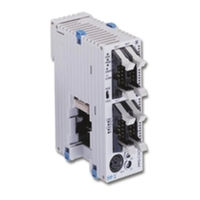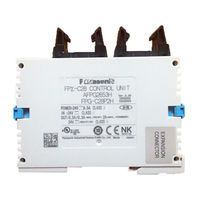Panasonic FPG-PP11 Motion Control Module Manuals
Manuals and User Guides for Panasonic FPG-PP11 Motion Control Module. We have 3 Panasonic FPG-PP11 Motion Control Module manuals available for free PDF download: User Manual, Technical Manual, Specifications
Panasonic FPG-PP11 User Manual (332 pages)
Brand: Panasonic
|
Category: Controller
|
Size: 25.4 MB
Table of Contents
Advertisement
Panasonic FPG-PP11 Technical Manual (240 pages)
Positioning Unit
Brand: Panasonic
|
Category: Controller
|
Size: 13.06 MB
Table of Contents
Panasonic FPG-PP11 Specifications (21 pages)
FPΣ (Sigma) Programmable Controller
Brand: Panasonic
|
Category: Controller
|
Size: 1.9 MB
Table of Contents
Advertisement


